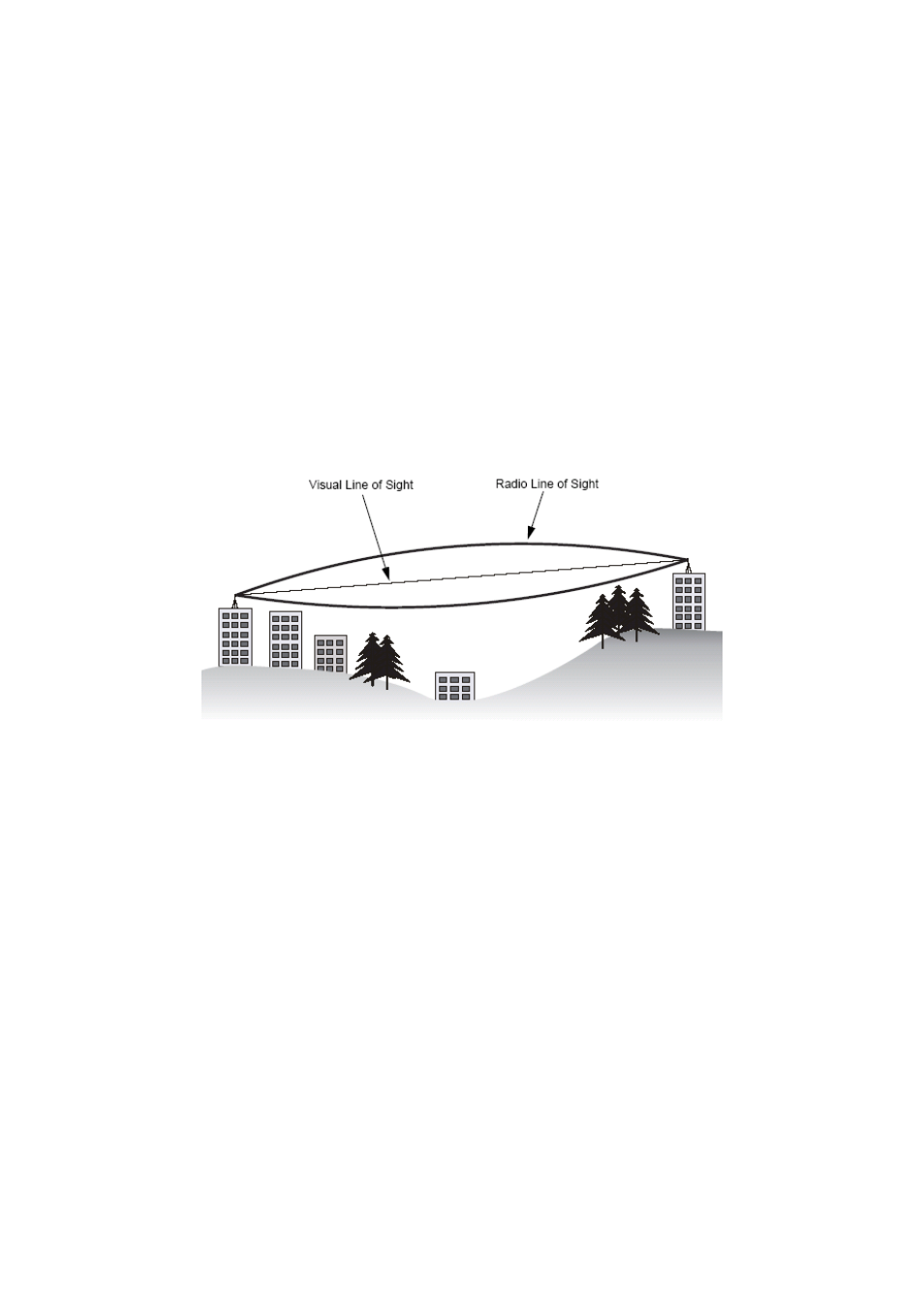Appendix c. rf los (line-of-sight) – PLANET WNAP-7200 User Manual
Page 71

APPENDIX C. RF LOS (LINE-OF-SIGHT)
For the wireless communication, the Line-of-Sight (LOS) will be the major issue over
building up the wireless link. This evaluated procedure is to reduce the obstructions and to
avoid the multiple-path signal degrading the communication quality.
The first requirement is the Line-of-Sight (LOS) between the both sides’ Antennas. The radio
line-of-sight concept is the area along the radio linking path through which is the bulk of the
radio signal power travels. The area is known as the first Fresnel Zone of the radio link. For
the radio link, it should avoid to be affected by obstacles in this path, including the ground
within 60% of the first Fresnel Zone.
The following figure illustrates the concept of a good radio line-of-sight.
If there is any obstacle in the radio path, it may still be a radio link but the quality and the
signal strength will be affected. Ensuring the maximum clearance from objects on a path is
important to locate the antennas and the height. For the long-distance links, the radio
signals might be lost partially due to the non-LOS issue.
As we setup the radio path for the wireless bridge link, it needs to consider these factors:
Avoid any partial line-of-sight between the antennas.
Be aware of trees that may be near the path or obstruct the path.
Make sure there is enough clearance from buildings and there is no any building or
construction blocking the path.
Check the land topology between the antennas using topographical maps, aerial photos,
or even satellite image data.
Avoid a path that may have the temporary blockage due to the moving objects, such as
cars, trains, or aircrafts.
71